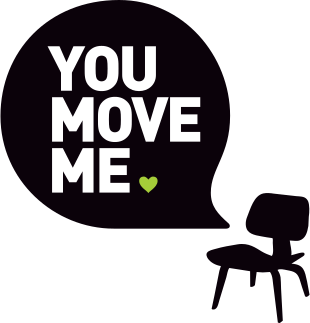7 Unexpected First-Time Home Buyer Costs


First-time home buyers know to prepare for a down payment, but that’s not the only cost to consider when buying your first home. Home-buying costs can add up quickly — and often startlingly — so it’s important to know about and prepare for them before you sign on the dotted line.
The following seven costs often surprise first-time home buyers — but only if you aren’t ready for them.
1. Earnest Money
Earnest money acts as a deposit on your home purchase application. It tells the seller you’re a committed, trustworthy buyer. If the contract goes through, the money will be applied toward the down payment and closing costs. And if the contract doesn’t go through, there are many contingencies in place to ensure you’ll get the money back. Simply deciding you’re no longer interested in the house most likely does not constitute a legitimate reason to back out of your contract, therefore, carefully review any contracts before putting down earnest money.
Tip: You should keep one to two percent of the total purchase price on hand as earnest money. It’ll help move your application along faster, an important factor as the housing market gets more competitive for buyers.
2. Appraisals and Inspections
You can’t avoid appraisals and inspections, nor should you want to. Appraisals ensure an accurate asking price, offering some protection to you and your lending institution. Buyers are typically responsible for the appraisal — often as much as several hundred dollars — though you may be able to negotiate these costs with the seller.
Home inspections are separate from the appraisal process and offer additional security for home buyers. They can prevent unexpected surprises like a termite infestation or leaky pipes. As these issues can affect your purchasing decision, as well as give you bargaining power, you’ll want to know about them before closing. In some instances, you can ask the seller to address the concerns before you close or negotiate for a better asking price. The buyer generally pays for the home inspection as part of the closing costs.
Tip: If you can, be present for the home inspection so you understand any issues as fully as possible before trying to negotiate the terms of your contract.

3. Insurance
Insurance can be complicated, but you can roughly divide it into three categories: homeowners insurance, mortgage insurance, and supplemental insurance. Every homeowner needs homeowners insurance. It helps pay for repairs or a rebuild of the home, covers personal belongings, and protects you against liability claims. Many lending institutions will require you to purchase homeowners insurance — and pay for a year’s worth of coverage — before approving your loan.
If you can put down more than 20 percent on a home, your lending institution likely won’t require you to purchase mortgage insurance. If you are required to purchase mortgage insurance, the costs will be added to your monthly mortgage payments, your closing costs, or both.
You do not need to purchase supplemental insurance, but it may be a good idea if you live in a flood- or earthquake-prone area, as those are generally not covered by standard homeowners insurance policies.
Tip: Work with an insurance agent to get the best rates on all your insurance needs. You may be able to cancel your mortgage insurance after you’ve paid off a portion of your loan.
4. Escrow Fees and Accounts
Escrow officers — often lawyers or title company representatives — serve as an independent third party to ensure that closing procedures go smoothly and that everyone gets paid. Unfortunately for home buyers, this means the escrow officer also needs to get paid. The escrow fee is generally split between buyers and sellers.
Separate from the escrow fee, your lending institution may require an escrow account to pay your property taxes and insurance. This account ensures that these fees are paid on time, which is why many lenders require the account. The lending institution will estimate the annual costs of your insurance and taxes, divide the estimated annual total into monthly payments, and roll those costs into your monthly mortgage payment.
At the end of the year, your lender will adjust the amount based on the actual tax and insurance bills. If you paid too much, you will receive a refund; if you didn’t pay enough, payments will generally be spread out over the next year. If you decide to go without the escrow account, you will be responsible for the two payments yourself.
Tip: Property taxes can be an unpleasant surprise, so research them before committing to a purchase. A licensed real estate agent can help with the work.
5. Utilities
If you’ve been renting a home or apartment previously, you may have had to pay connection fees for electricity or gas. When you own your home, you will be responsible for paying setup fees and monthly bills for every utility — including electricity, gas, water, sewage, trash, recycling, TV, and Internet. Utility companies will check your credit history and may require you to pay a deposit or get a letter of guarantee from someone who agrees to pay your bills if you cannot.
Tip: Talk with your new neighbors about who they purchase utilities from. Some locations have only a single provider for water and gas, but if you live in a location with multiple providers, you should compare rates to get the best one.

6. Home Improvements, Maintenance, and Repairs
Even if the home sellers cover major repairs, such as a foundational issue, you may still find yourself with the expense of a new HVAC system, roof, or water heater after you close. Other expenses will be self-inflicted, of course, like cosmetic upgrades to cabinets, flooring, or walls. And if your new home has a yard, you’ll need to purchase a lawnmower and weedeater or hire a lawn and landscaping service, too.
Tip: Make a list of improvements and categorize them by need. A new HVAC system may be essential, while cabinetry and other cosmetic upgrades can wait till next year. If you prioritize the repairs, you can keep costs low, not to mention recoup some of the investments if you sell the house later.
7. Furniture and Appliances
Don’t expect your new home to come equipped with all the appliances you saw inside. Every market is different, but you’ll want to discuss all appliances with your seller to make sure you are clear on what comes with the home and what does not. At minimum, you’ll likely need to purchase a new washer and dryer, if not a refrigerator and stove as well. Things like ceiling fans, light fixtures, and AC units — appliances you might consider “fixed” — will not necessarily be there for you when you move in unless they are explicitly part of the contract.
Tip: As with repairs, you should prioritize furniture and appliances by need. If you purchase energy efficient appliances, keep the receipts. You can often claim the expenditures on your tax return.

Now that you’re prepared for all the costs that go into your first home, get ready to sign that contract and move into your very own home!

